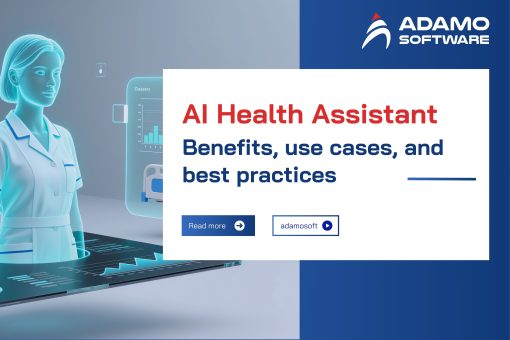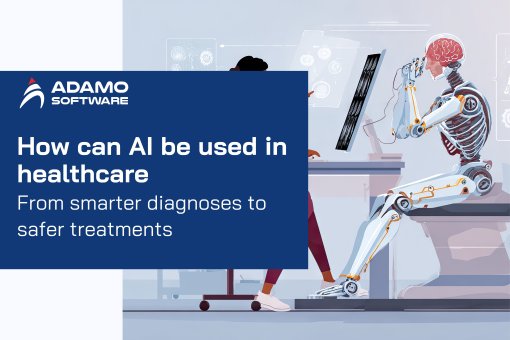Virtual Health Assistant: Why they matter and how to create one
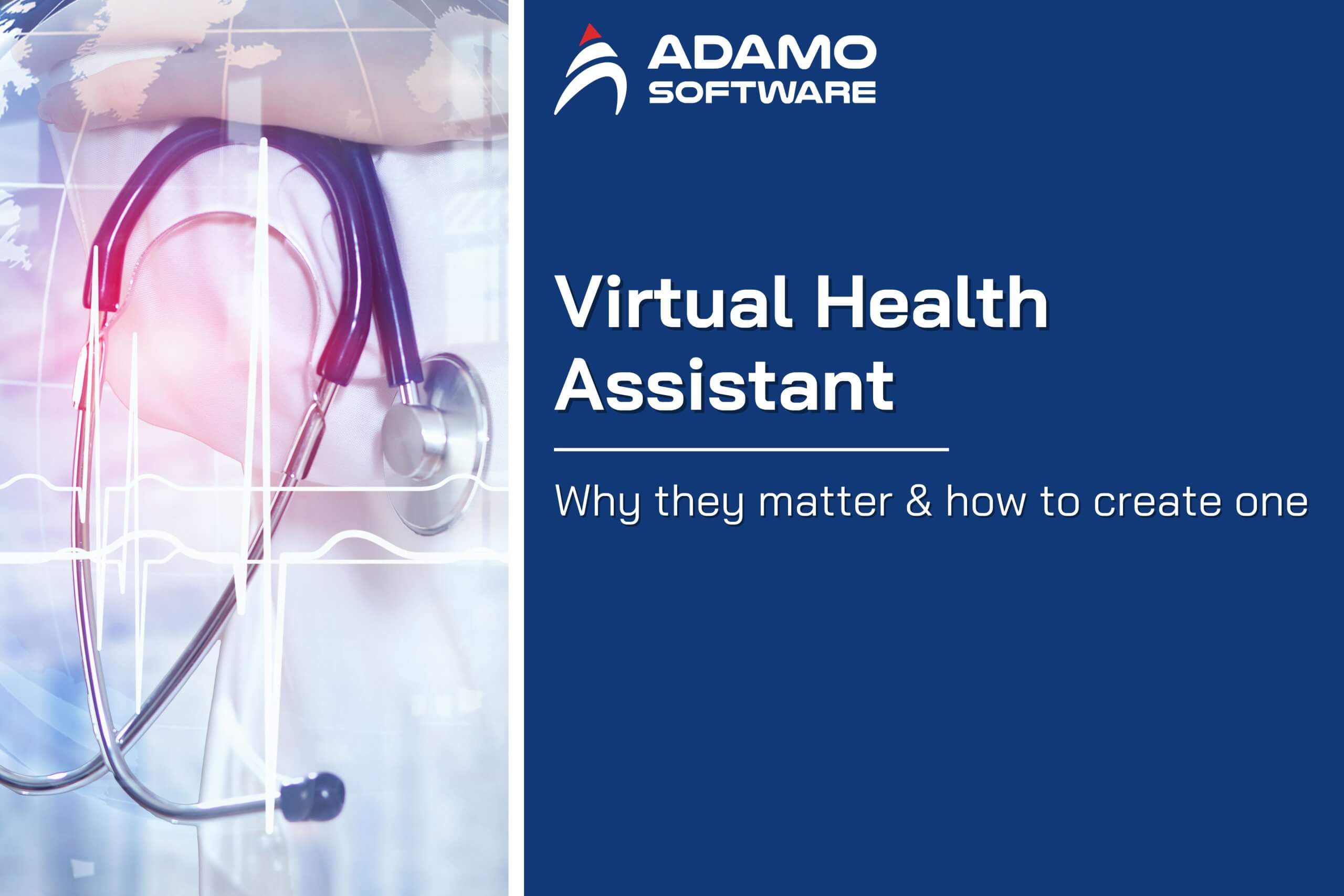
A virtual health assistant has become an effective tool to solve various issues in enhancing healthcare efficiency. Let’s learn about this with Adamo Software!
In today’s digital era, many industries have adopted digital technology into operation, and so does the healthcare industry. Upon facing various issues in balancing patient care’s quality with operational efficiency like delays in patient scheduling and access to information, repetitive tasks, etc., virtual health assistant has become an effective tool to solve these problems. Let’s delve into this tool with Adamo Software!
Through this blog post, you will find out the following pieces of information.
- What is a Virtual Health Assistant?
- Why is an AI-Powered Virtual Health Assistant a game changer?
- Best use cases of Virtual Health Assistants in Healthcare
- Step-by-step guide to develop your own AI-Driven Virtual Healthcare Assistant
All information has been thoroughly researched and updated to the latest trends. So, let’s read our blog post and find some useful information!
I. What is a Virtual Health Assistant?
A virtual health assistant is an AI-powered tool that helps patients and providers manage a variety of healthcare tasks. They include scheduling appointments, answering medical queries, and supporting chronic care management. When integrating with healthcare systems, the virtual health assistant can reduce the workload for providers and enable more personalized support for patients.
Below are some primary roles of the virtual health assistant.
1. Task automation
The virtual health assistant will automate many essential tasks, from sending reminders to collecting patient feedback. They also help improve healthcare workflows, allowing healthcare workers to focus more on treating and caring for patients.
2. Seamless system integration
Seamless system integration is also a core function of the virtual health assistant. It connects to electronic health records (EHRs) and patient management systems to provide real-time data. This allows for personalized interactions with each patient. Thanks to this, diagnosis and treatment become more efficient and tailored to each case. Besides, this allows doctors to make faster and more accurate decisions.
3. Conversational AI-powered interactions
Leveraging natural language processing (NLP), the virtual health assistant can be able to simulate human conversations, which helps patients feel heard and understood. This creates a more friendly and approachable communication experience.
Additionally, it helps reduce stress and anxiety for patients during the information exchange process.
Generally, serving as a crucial link between patients and providers, a virtual health assistant can deliver efficient and compassionate care. This contributes to improving service quality and overall patient experience.
II. Why is an AI-Powered Virtual Health Assistant a game changer?
An AI-driven virtual health assistant can revolutionize medical care by transforming how it’s delivered and how patients and professionals engage with the broader health system. But what are the key benefits of the virtual health assistant that make it so vital to modern healthcare? Here is the detailed answer to this question.
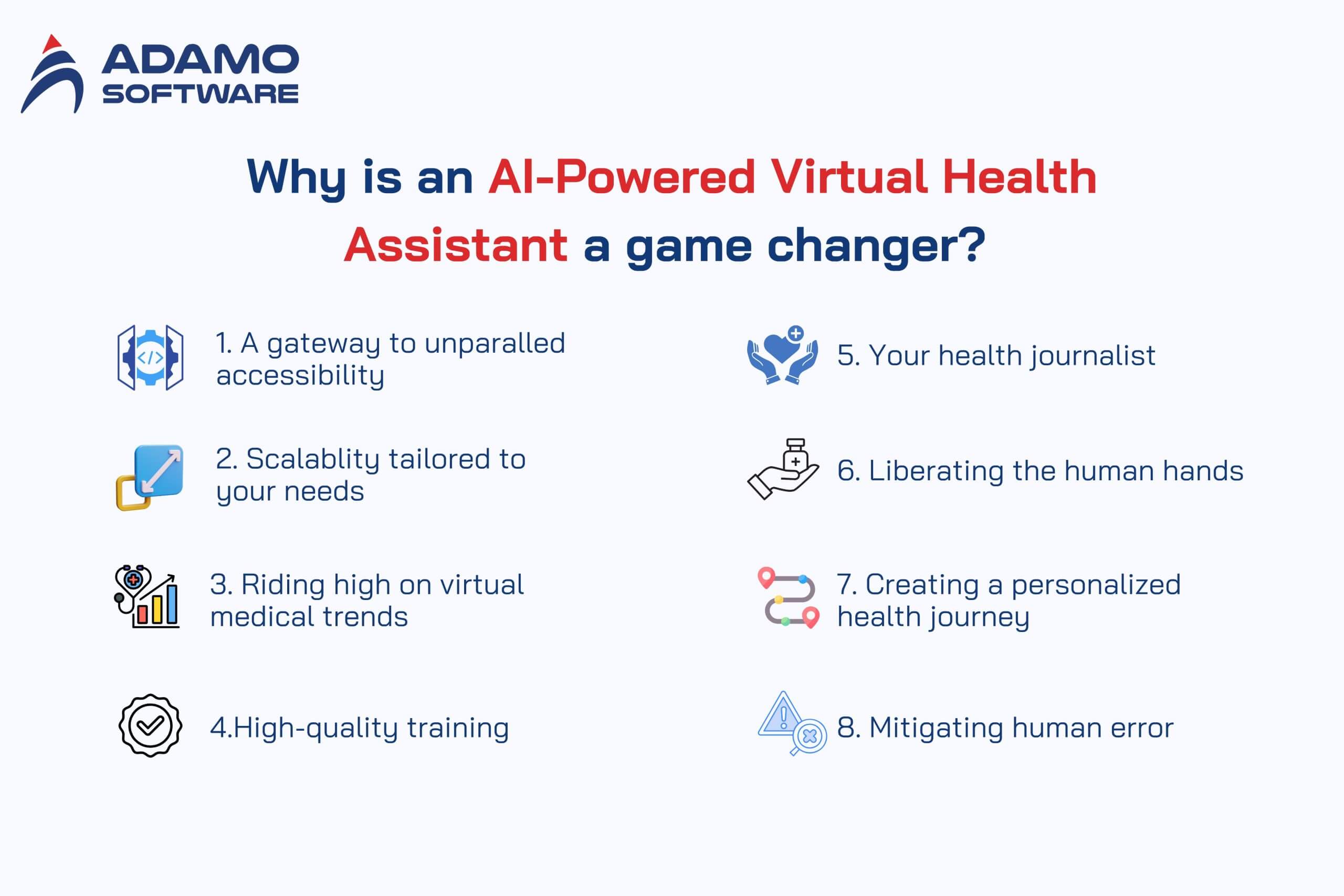
- A Gateway to Unparalleled Accessibility – Getting personalized health insights anytime and anywhere
- Scalability Tailored to Your Needs – Upscaling or downscaling services following the requirements
- Riding High on Virtual Medical Trends – Ensuring seamless digital consultations
- High-quality Training – Expert-level medical advice
- Your Health Journalist – Health information updated
- Liberating the Human Hands – Optimizing resources
- Creating a Personalized Health Journey – Better outcomes for patient
- Mitigating human error – Ensuring consistent accuracy
Let’s delve into each reason for adopting a virtual health assistant in healthcare operation with Adamo Software!
1. A Gateway to Unparalleled Accessibility
Traditionally, patients have to schedule appointments and wait in long queues to access health advice. Thanks to the virtual health assistant, this no longer happens, as patients can easily access healthcare services.
For example, Saal.ai’s cognitive virtual assistant provides personalized health insights through a bilingual platform available anytime, anywhere. This instant access empowers users to seek prompt medical attention and manage their health proactively.
2. Scalability Tailored to Your Needs
An AI-powered virtual healthcare assistant can scale to meet the needs of any provider, from large healthcare facilities to solo practitioners. Their flexible design allows healthcare professionals to easily scale services up or down based on patient volume or specific requirements. This allows for responsive resource allocation and streamlined patient management.
3. Riding High on Virtual Medical Trends
The virtual health assistant integrates seamlessly with the growing use of telemedicine and virtual consultations. These assistants enhance the virtual care experience, ensuring patients have a seamless digital medical consultation.
4. High-quality Training
Beyond being simple programs, virtual healthcare assistants are developed with specialized medical expertise. This guarantees that the advice and patient responses are of a professional standard, matching the quality provided by a trained medical expert.
5. Your Health Journalist
The virtual healthcare assistant can serve as your health journalist that records your health condition and information. It excels at tracking health metrics like blood pressure and glucose levels, helping individuals stay informed about their health status and progress.
6. Liberating the Human Hands
Resource optimization is a major advantage of the virtual health assistant. In healthcare, virtual assistants manage key tasks, such as resolving patient queries and sending appointment reminders. Medical professionals can focus on intricate tasks, which helps reduce burnout and improve patient care. This, in turn, allows facilities to manage resources more efficiently and streamline operations.
7. Creating a Personalized Health Journey
The virtual health assistant helps you create a personalized health journey for different patients with different health conditions, endurance, and treatment. For example, virtual nursing assistants, such as those from Dyvo.ai, leverage gamification features to increase user engagement. A tailored approach to care increases patient engagement, which ultimately leads to better health outcomes.
You can explore more about How can AI be used in healthcare: From smarter diagnoses to safer treatments here.
Explore Our Tailor-made Software Development Solutions
We are confident in providing end-to-end software development services from fully-functioned prototype to design, MVP development and deployment.
8. Mitigating human error
Small human errors such as incorrect data entry, forgetting to update information or miscommunication can lead to serious consequences. With the ability to process data accurately and consistently, the virtual health assistant helps to minimize these errors. By automating repetitive processes and cross-checking information, the system ensures that all medical data is stored, retrieved and analyzed accurately.
In general, the virtual health assistant provides access to healthcare anytime, anywhere, providing personalized information, supporting online consultations, and ensuring consistent accuracy. They also help optimize resources, scale flexibly, update medical information in a timely manner, and enhance personal healthcare experience.
III. Best use cases of Virtual Health Assistants in Healthcare
Virtual health assistants are changing healthcare by using conversational AI to help both patients and providers. These tools work smoothly with existing healthcare systems to automate tasks, keep patients more engaged, and improve how care is delivered. Let’s see some best use cases of the virtual health assistant in healthcare with Adamo Software!
Here are the cases divided for patients, healthcare industry, and MedTech.
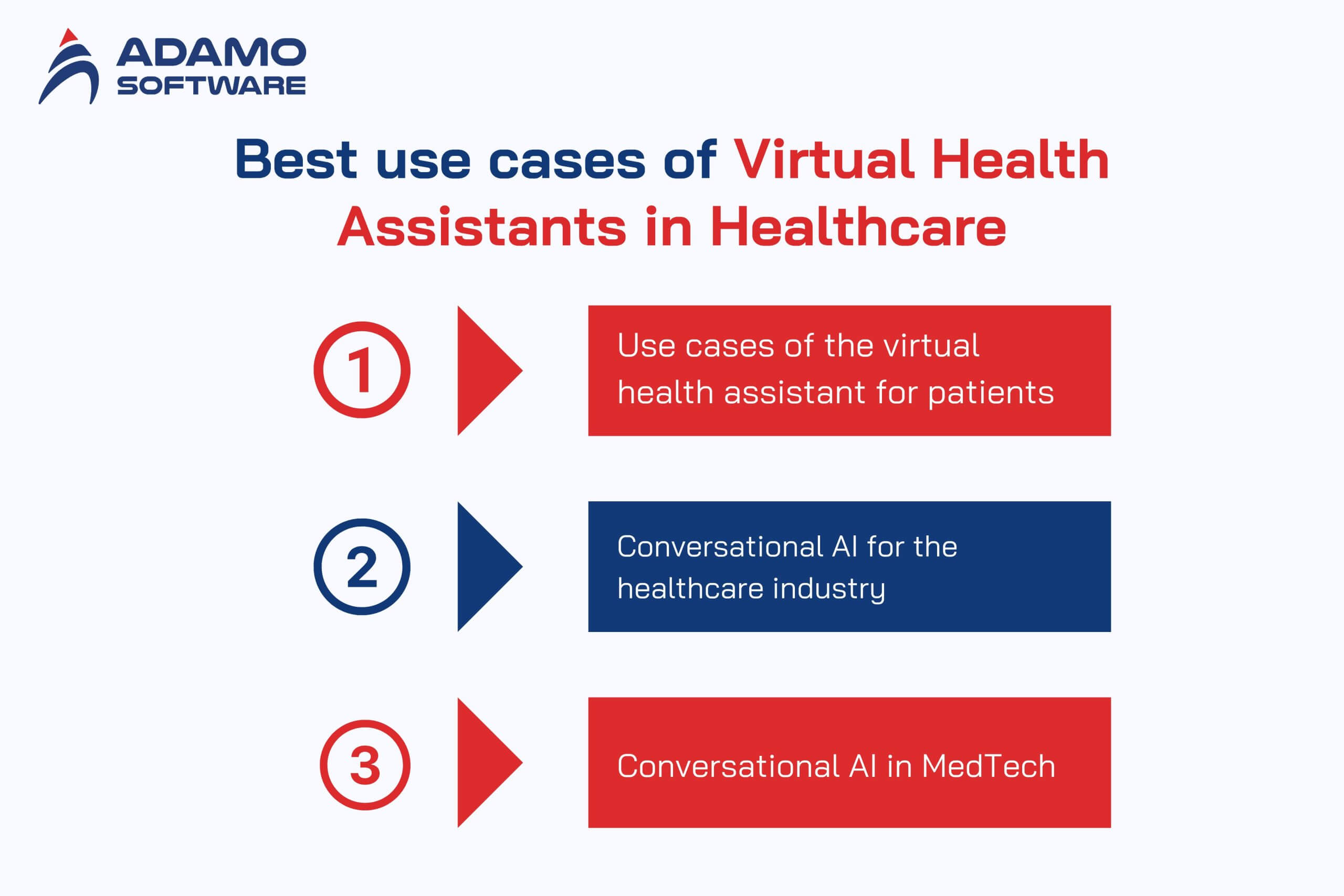
- The use cases of the virtual health assistant for patients: simplifying healthcare scheduling and easily looking for healthcare data
- Conversational AI for the healthcare industry: streamlining administrative workflows and enhancing patient engagement
- Conversational AI in MedTech: easily managing device, wearables integration
Let’s discuss more detailed information about each case!
The use cases of the virtual health assistant for patients
Conversational AI technology is opening up new ways for patients to communicate with the healthcare system in a more natural and convenient way. With a virtual health assistant, patients can streamline their appointment scheduling and get quick responses.
- Simplifying healthcare scheduling
Inefficient healthcare scheduling often leads to patient dissatisfaction and provider burnout. Using conversational AI, the virtual health assistant streamlines the appointment process by automating bookings, reminders, and cancellations. Virtual health assistants empower patients to reschedule appointments in real time, eliminating delays and errors. Automated notifications from virtual assistants ensure patients are informed on time, which improves adherence and reduces no-show rates by 30%.
- Promptly responding to patients’ requests and questions
Patients often require prompt, reliable responses to their health inquiries. Through conversational AI, virtual assistants provide patients with evidence-based responses to questions about medications, symptoms, or post-care. By analyzing patient inquiries, AI-powered assistants can deliver personalized, context-aware responses instantly. This proactive support boosts patient satisfaction, leading to a 27% increase in CSAT scores across health systems.
Conversational AI for the healthcare industry
Besides adopting for patients, the virtual health assistant can be used for the whole healthcare industry. It optimizes administrative processes and enhances patient engagement.
- Optimizing administrative processes
The virtual health assistant plays an important role in streamlining administrative workflows. The operational success of healthcare systems is frequently impacted by administrative inefficiencies. Leveraging conversational AI, virtual health assistants automate complex administrative processes like insurance verification, billing notifications, and patient record management. By reducing manual errors and keeping records accurate, these assistants help ensure regulatory compliance. Automation reduces operational costs by 60%, allowing resources to be reallocated to more value-added healthcare services.
- Enhancing patient engagement
Keeping patients engaged is crucial for the success of long-term care. Conversational AI in healthcare allows virtual assistants to enhance patient engagement through tailored reminders, check-ins, and follow-ups. AI analyzes patient behavior and generates actionable insights, enabling personalized care during every interaction. Improving patient adherence to care plans through proactive communication results in better health outcomes and increased loyalty.
Conversational AI in MedTech
Patients often struggle to follow the complex instructions associated with using medical devices. In MedTech, conversational AI streamlines this process by offering clear, step-by-step guidance for device setup and troubleshooting. By providing real-time, accessible instructions, virtual health assistants reduce the need for support from human teams. AI monitoring detects device performance issues, promptly notifying patients and providers of potential risks.
Besides, wearable devices generate a significant amount of health data that requires analysis to translate into actionable care. Virtual health assistants integrate with wearable devices for health data monitoring and analysis. They also use conversational AI to streamline healthcare scheduling. AI monitors vital signs to detect irregularities, promptly alerting providers to enable timely intervention. Integration with wearables enhances chronic care management, leading to fewer emergency visits and improved patient outcomes.
IV. Step-by-step guide to develop your own AI-Driven Virtual Healthcare Assistant
Crafting an AI-driven healthcare tool requires meticulous steps. Let’s explore the process to develop your own virtual health assistant with Adamo Software!
Below are nine steps that you should refer to.
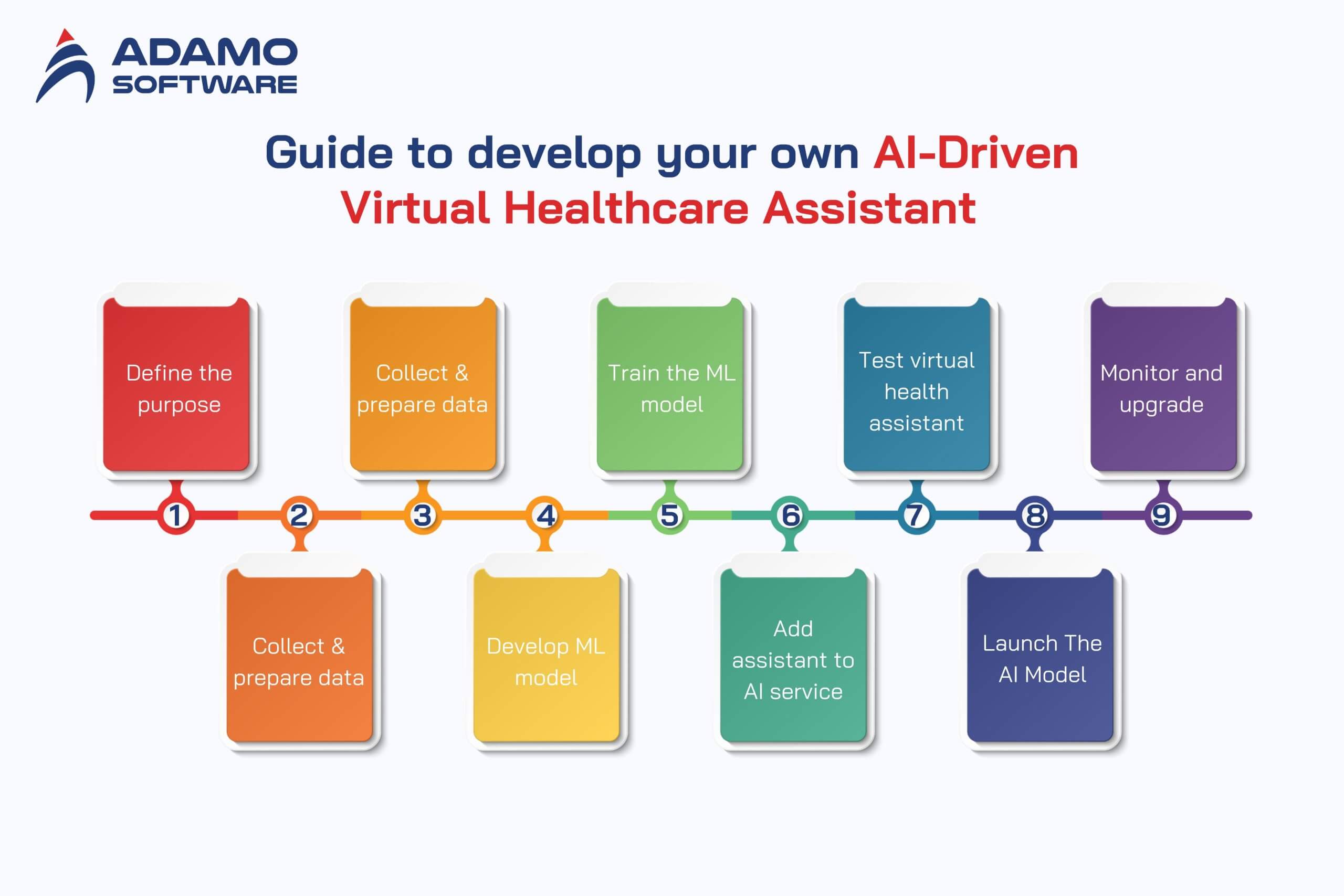
- Defining the purpose: Specific roles of the virtual healthcare assistant
- Collecting and preparing data: Datasets that cover a wide range of medical situations
- Developing a machine-learning (ML) model: Integrating diverse data
- Training the ML model: Feeding the model the prepared data
- Adding the assistant to your AI service: Integrating the model with an assistant framework
- Curating a user interface: Ensuring accessibility for a wide patient base
- Testing your virtual health assistant: Engaging real-world users
- Launching the AI model: Rolling out the virtual healthcare assistant to the broader audience
- Monitoring and upgrading: Reinforcing your virtual healthcare’s efficiency
Let’s delve into each step with us!
1. Defining the purpose
Before getting technical, you need to clearly define the specific roles for your virtual healthcare assistant. Will your tool provide preliminary diagnoses based on symptoms, or will it help manage chronic conditions like diabetes or hypertension? By clearly defining the virtual health assistant’s purposes, you can develop it in the right direction.
2. Collecting and preparing data
In healthcare, an AI solution’s success depends on the quality and relevance of its data. You need to procure diverse datasets that cover a broad range of medical situations. This could involve sourcing electronic health records (EHRs), imaging studies (like MRIs or X-rays), and laboratory test results. When collecting patient data, always follow guidelines like HIPAA regulations, ensuring the information is properly anonymized.
3. Developing a machine-learning (ML) model
Developing a machine-learning (ML) model is the next step in developing a virtual health assistant. You may want to choose an algorithm or set of algorithms suitable for medical tasks. For diagnostic tools, classification algorithms might be appropriate. If you need to predict disease progression, regression models are a good choice. To recognize images, such as finding tumors in X-rays, use a convolutional neural network (CNN).
4. Training the ML model
Once you have developed the ML model, it’s time to train it. This training phase allows the model to learn from data and fine-tune its internal parameters for accurate predictions. Regularly validate its performance with a subset of data to prevent overfitting, ensuring it understands medical patterns, not just memorizes them. Let’s use medical metrics like sensitivity, specificity, and positive predictive value to accurately measure its performance.
5. Adding the assistant to your service
After training, it’s time to integrate the model with an assistant framework, the interactive layer between the AI and the end users. Platforms like Microsoft’s Azure Bot Service or AWS Lex are great choices because they are both robust and scalable. When you embed the model, make sure the chatbot can understand and process medical jargon, technical terms, and even misspellings or slang from patients.
6. Curating a user interface
When you develop the virtual health assistant, you must also focus on the user interface besides its effectiveness. Collaborating with clinicians is a great way to ensure the interface aligns with medical workflows, which minimizes the learning curve for staff. You may want to add features like voice recognition, especially for older users or those with motor disabilities. This holistic approach makes the AI tool accessible to a wide range of patients.
7. Testing your virtual health assistant
Before officially launching your virtual health assistant, it is essential to test it in the real environment. During the testing phase, involve real-world users, medical professionals, and potential patients. Collect their feedback, paying special attention to any false positives or false negatives in the medical predictions. You may want to ensure that the tool follows clinical guidelines and doesn’t accidentally mislead users.
8. Launching the AI model
Now, it’s time for you to launch your virtual health assistant and expand it to a broader audience. During the initial phase, keep medical professionals on standby to promptly and accurately address any user queries or concerns.
9. Monitoring and upgrading
The medical field is always changing, with new research, findings, and guidelines appearing all the time. Thus, you may want to continuously upgrade your virtual health assistant to meet the needs of the industry. Let’s regularly retrain the model with fresh data to keep it updated with the latest medical knowledge.
Besides, it is also essential to assess user feedback and incorporate recommended enhancements from both a medical and user-experience perspective. It’s also essential to look for new cyber threats and strengthen the tool’s security to protect patient data.
V. Final thoughts
In conclusion, the virtual health assistant is an essential tool that supports patients and healthcare professionals in health management, from providing medical information, appointment reminders, to symptom tracking. This is an important solution because it helps personalize the care experience, save time and improve treatment efficiency.

Are you looking for a partner to help you develop your own virtual health assistant? As one of Vietnam’s leading digital health technology companies, Adamo Software can be your ideal choice. Here’s how we can help.
- Consulting and analyzing requirements: Support in determining goals, necessary features and development roadmap of virtual health assistants suitable for your medical organization
- Designing medical-specific UX/UI: Create friendly, easy-to-use interfaces that comply with accessibility standards for patients of all ages
- AI development and medical data integration: Build AI models to process natural language, analyze medical records data and integrate with EMR/EHR systems
- Ensuring security and regulatory compliance: Deploy advanced security solutions that meet HIPAA, GDPR and international medical regulations
- Continuous implementation and optimization support: Provide maintenance services, update new features and optimize system performance based on real-world feedback
Still hesitating whether to choose Adamo Software? Let’s contact us for more detailed information!







